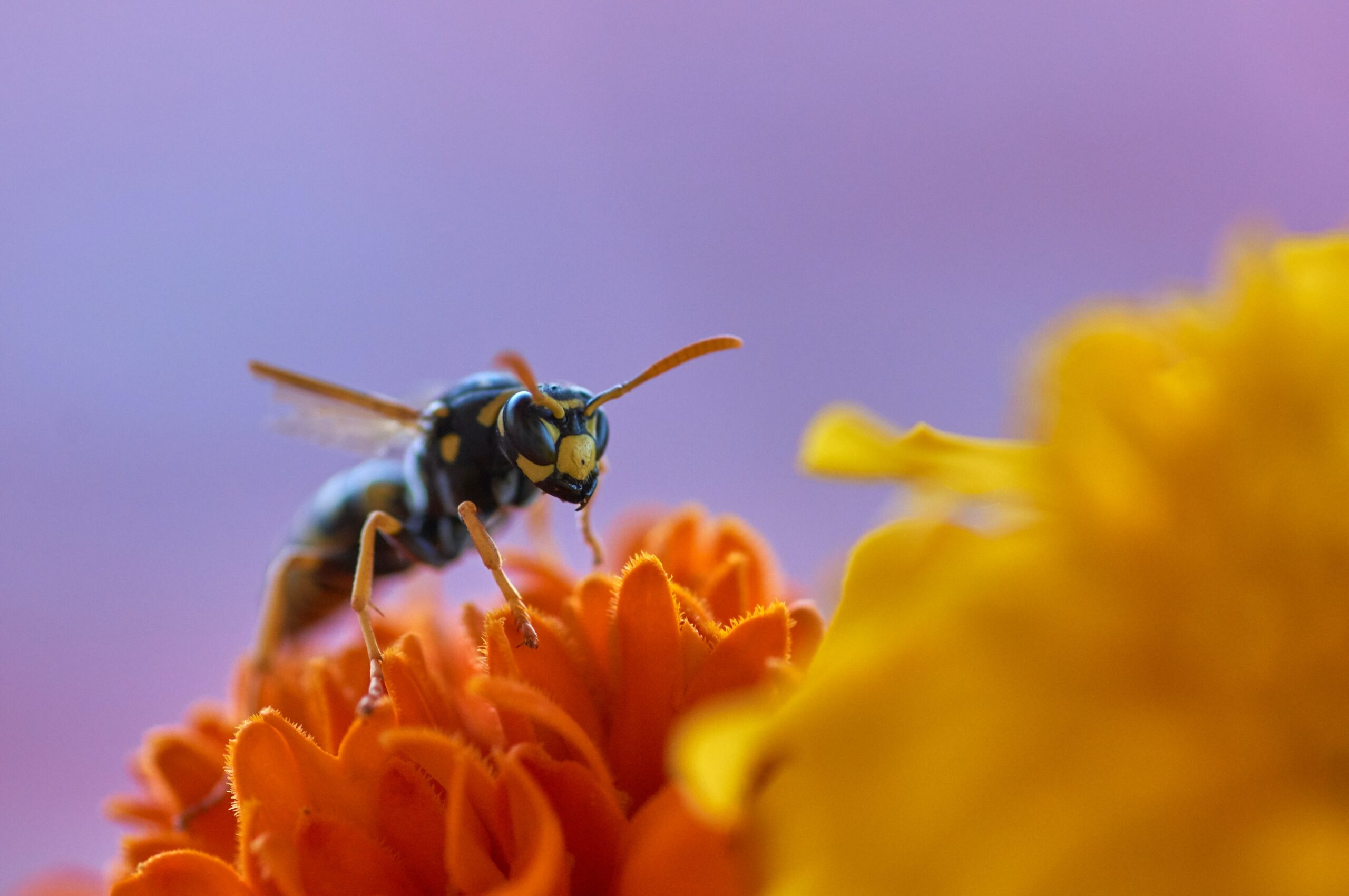Wasps belong to the animal kingdom, class Insecta, and order Hymenoptera. These buzzing insects are closely related to bees and ants and are known for their distinctive appearance and behaviors.
The wasp might be affectionately known as the busy buzzer. We invite you to get busy below learning more about the fascinating world of wasps, including their various species, unique characteristics, and how they differ from bees, yellow jackets, and hornets.
The wasp is an insect with a slender body, six legs, and two pairs of wings. They typically have a narrow waist, called a petiole, which distinguishes them from bees. Wasps come in a variety of colors, including black, yellow, and metallic shades. Unlike bees, most wasp species do not have the same level of body hair.
One of the unique characteristics of wasps is their ability to sting multiple times without losing their stinger, unlike bees that typically lose their stinger and die after stinging. Wasps possess a modified ovipositor, which can be used for defense and capturing prey. However, not all wasp species are aggressive, and they usually only sting when they feel threatened or their nests are disturbed.
Types of Wasps
With an estimated 100,000 identified species, the wasp exhibits remarkable diversity. They can be categorized into several families, including paper wasps (Polistinae), yellow jackets (Vespinae), hornets (Vespa), and parasitic wasps (Ichneumonidae and Braconidae). Each family and species has its unique characteristics and behaviors.
Here is a list of 7 popular or common types of wasps:
- Bald-faced Hornet (Dolichovespula maculata): Despite the name, the bald-faced hornet is actually a type of wasp. It gets its name from the white markings on its face. These wasps build large, grayish-colored nests that are often suspended from tree branches.
- European Hornet (Vespa crabro): The European hornet is one of the largest wasp species. They have brown and yellow markings and build their nests in tree hollows or other protected locations. They are generally less aggressive than other wasps but can still deliver a painful sting if provoked.
- Mud Dauber Wasp (Sceliphron spp.): Mud daubers are solitary wasps known for building nests out of mud. They construct cylindrical mud tubes, often attaching them to structures such as walls or eaves. Mud daubers are beneficial as they hunt spiders to provision their nests.
- Cicada Killer Wasp (Sphecius speciosus): Cicada killer wasps are large, solitary wasps that prey on cicadas. They dig burrows in the ground and paralyze cicadas before bringing them back to their burrows as food for their larvae.
- Asian Giant Hornet (Vespa mandarinia): The Asian giant hornet, also known as the “murder hornet,” is the largest species of wasp. Native to Asia, they have a fearsome reputation due to their aggressive behavior and potent venom. They are not commonly found outside of Asia.
- Cuckoo Wasp (Chrysididae family): Cuckoo wasps are named after their behavior of laying their eggs in the nests of other wasps. They are known for their metallic, often iridescent colors and are relatively small in size.
- Parasitic Wasps (various families): There are many species of parasitic wasps that belong to different families, such as Ichneumonidae and Braconidae. These wasps lay their eggs inside or on other insects, often caterpillars or other larvae, which serve as hosts for their developing young.
Please note that some wasp species can exhibit aggressive behavior and deliver painful stings if provoked. It is important to exercise caution and respect their space when encountering wasps in their natural habitats.
What makes wasps unique?
Wasps are known for their vital ecological roles as predators and pollinators. As predators, they help control populations of insects that may be considered pests, such as flies and caterpillars. By feeding on these insects, wasps contribute to maintaining balance in ecosystems.
Wasps are also important pollinators, although they are often overshadowed by bees in this role. While foraging for nectar, wasps inadvertently transfer pollen from flower to flower, aiding in plant reproduction.
Unlike bees, wasps are less specialized in collecting pollen and do not have specialized structures like pollen baskets on their hind legs. However, their pollination services should not be underestimated, as they visit a wide range of flowering plants and contribute to plant diversity.
Summary
Wasps are remarkable insects that play crucial roles in ecosystems as predators and pollinators. With their slender bodies, versatile behaviors, and diverse species, they contribute to the intricate balance of nature.
Understanding the unique characteristics of wasps, their various species, and how they differ from bees, yellow jackets, and hornets helps us appreciate their importance and coexist with them in harmony.






























































